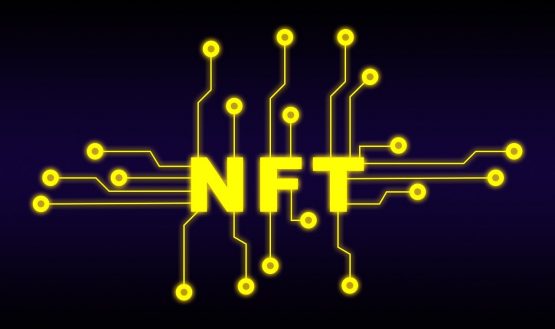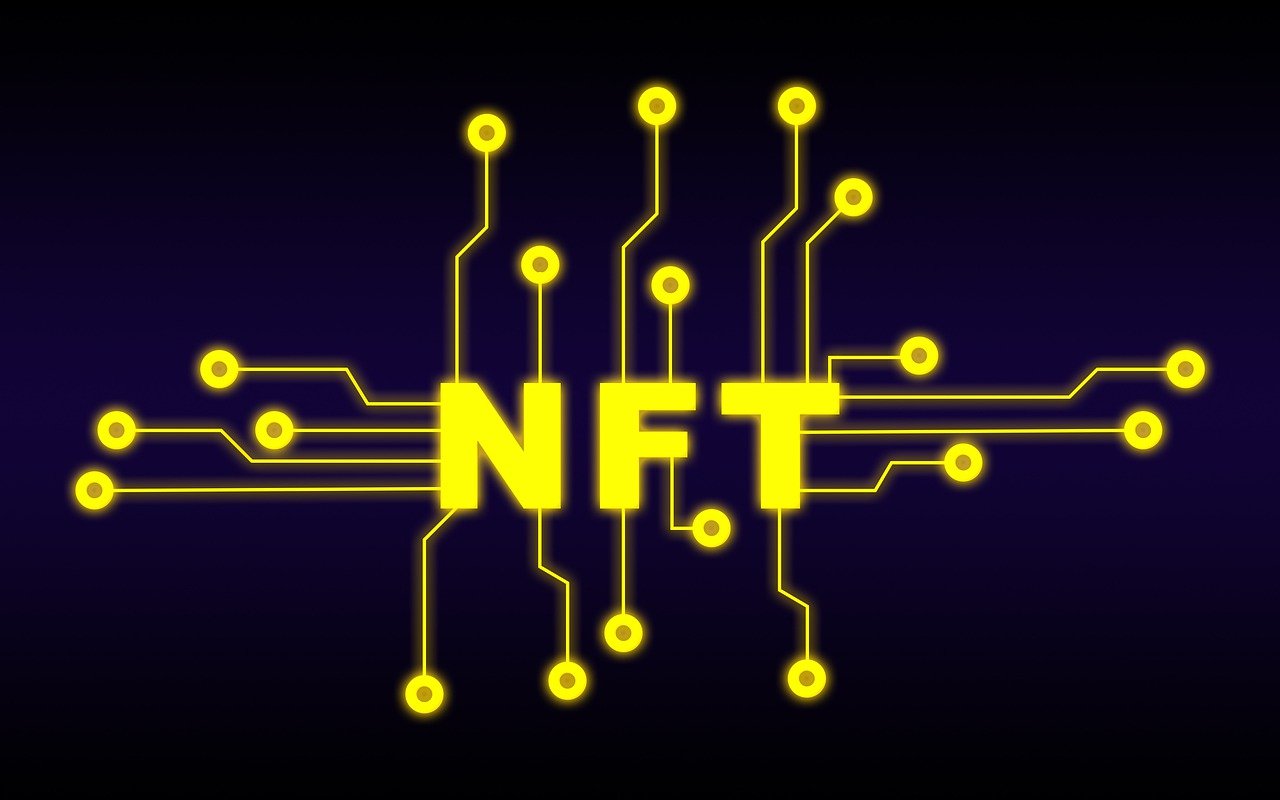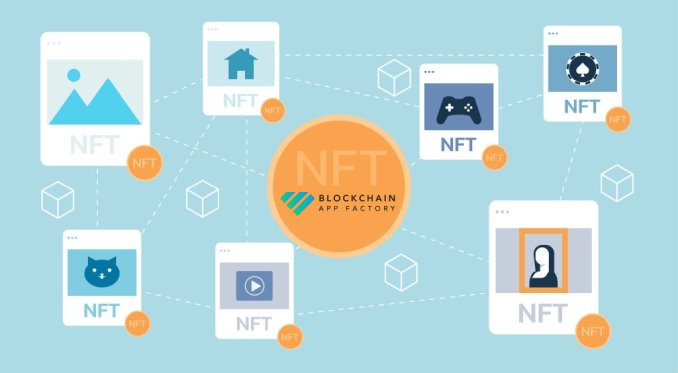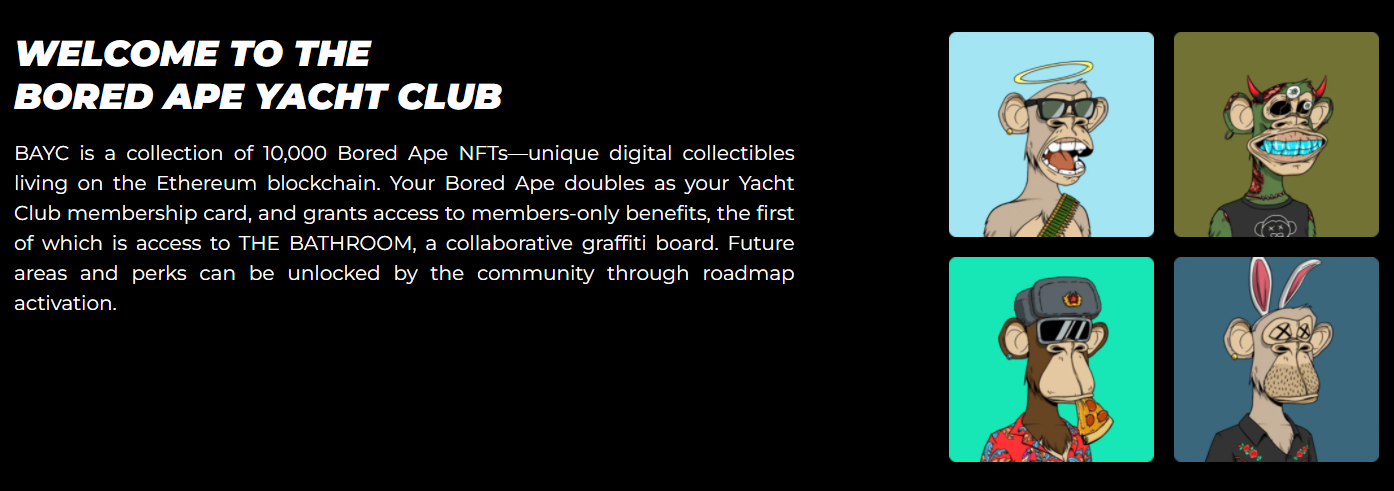NFTs are taking the world by storm. As millions of people flock to create, buy and sell NFTs items for staggering profits and value; some are simply left to wonder what all the fuss is about.
It’s important to understand their fundamentals to take advantage of the trend & benefit in the future.
On this Page:
What are NFTs?
A majority of people consider an NFT to be a cryptocurrency, which is only fair since both make use of blockchains or have tokens that represent NFTs. However, they are completely different concepts entirely.
What NFT stands for
NFT is an acronym for non-fungible tokens. While the term is as eminent as ever, there is no particular individual who is recognized as someone who coined the term. However, the first NFT was created on May 3rd 2014, by Kevin McCoy, who named it Quantum.
Non-fungible means one-of-a-kind. Simply put, NFTs are nothing more than one-of-a-kind asset, that has been tokenized on the Blockchain, which is a digital ledger.
NFTs explained in simple terms
To understand better, let us consider a real-world instance; for eg. a painting. An original painting, made by a famous artist, could be of very high value. This artwork can be copied and multiple fakes can be created that look exactly like the real deal.
However, the value of the painting lies in its authenticity. Although each print of the painting looks exactly alike, they cannot be compared to the original piece since it is one-of-a-kind. The same concept of putting a stamp of authenticity and ownership on a piece of art by using blockchain technology is called an NFT.
The whole concept is built around the idea of how we as humans, perceive value. A Monet painting or the Mona Lisa, valued in millions of dollars, are great paintings. It doesn’t have an actual use-case or physical value attached to it however unless there are people interested in buying it. An NFT is the digital version of a painting.
Both the methods prioritize authenticity and base value off of it. So, just like an artist who makes a painting sells it in the real world, another artist showcases his or her creativity digitally and sells it online. The method of buying an NFT is also accessible to all, as owning one is only a few clicks away on an NFT marketplace.
The technology behind NFTs
NFT is one of the many gifts of Blockchain technology. Thus, to understand NFTs, it is crucial to know what a blockchain is. Currently, a lot of corruption and under-the-table deals can be easily carried out by anyone. The transactions made in these deals are stored somewhere. It could be banks or any other centralized authority which means the transactions made cannot be accessed by everyone.
It also means that there is a chance of the record of transactions getting tampered with. A blockchain negates this problem as it is decentralized, transparent and cannot be easily changed.
Every data regarding the transaction is stored in ‘blocks’ and contain certain sections of information. The first is relevant information; which varies according to the use case for eg. for a cryptocurrency like bitcoin, the only information that needs to be stored is transaction specifics.
The second is hash, which is like a unique code for every transaction created by the blockchain; while the third is hash from the previous block, thus making a chain of blocks from which the name, blockchain is derived.
NFTs are a safe way for artists to be paid adequately. There is no middleman as such which poses a risk for the artists’ work. They have complete control over how or when, and at what price they wish to sell their artwork.
The most used blockchain to mint NFTs is the Ethereum Network. It has certain token standards set in place that facilitate various use-cases. The ERC-20 standard simply contains the transaction details while the NFT standards are ERC-721 and ERC-1155.
Owning an NFT is not to be mistaken for having an actual image or video or the actual file of the artwork. It is merely a piece of data that points to a server hosting the particular artwork. Ownership is not a sensitive issue as the NFT is nothing more than a string of data. Whoever owns the password to access the data is the owner of the NFT.
The safety and authenticity of the artwork are guaranteed by the blockchain used. For instance, duplicating or generating counterfeit artworks of a certain creator would require overpowering the entire Ethereum Network which is not feasible. Of course, the Ethereum Network isn’t the only blockchain on which NFTs can be minted.
There are several other emerging options like Tezos, Solana etc which can be used as an alternative. Minting on the Ethereum chain is costly and requires a high amount of energy. These problems can be more or less tackled by many other options.
How are NFTs different from cryptocurrencies?
NFTs are Digital assets. And like we mentioned, they are non-fungible or irreplaceable. However, a cryptocurrency isn’t. While every two same cryptocurrency is valued at a 1:1 ratio, the same cant be said for an NFT. Each NFT has its own value. A cryptocurrency, unlike NFTs, can be thus traded and exchanged at equivalency.
Does this mean that an NFT transaction isn’t validated on a blockchain? The answer is yes, it not only is validated on the blockchain but is also transacted using the cryptocurrency of the blockchain. In simple words, while an NFT can be considered to be a painting, a cryptocurrency is; in this case, simply the money involved in the buying or selling of the painting aka NFT.
In other words, you can trade one ether for another ether (cryptocurrency) as they are of equal value, but cannot put the same kind of uniform value over two different NFTs. The blockchain, which acts as a platform for both these assets can also differentiate one NFT from the other, due to a unique identification and metadata associated with every NFT that is minted.
NFT |
Cryptocurrency |
|
|
How are NFTs created and sold, and why all the hype
Creating an NFT is now made extremely simple by the new platforms that have emerged over the past years. The process of creating or ‘minting’ and NFT, required some coding knowledge previously.
However, the only thing needed for creating an NFT today is access to a device, an account for whichever platform you wish to mint your NFT on like Rarible, Opensea, Forge, Mintbase etc, an Ethereum wallet and some ETH.
Creating an NFT only requires a small number of steps. One can start by connecting their wallet to the minting platform. There are several options that each platform provides for the users. After connecting the wallet, the creator can select the file he wishes to mint as an NFT.
This could be an image, video, gif, audio etc. Several creators launch NFT collections that feature a large number of images made with the help of algorithms.
NFTs connect a range of artists and creators on the Blockchain – Finextra
You can also read our article and get more info about buying the best NFTs. After selecting the file, the creator can set a name for the NFT along with a description.
In the case of a collection i.e multiple NFTs created to be sold at the same time, the rarity of attributes can be mentioned in its designated column. Royalties for the creator – commissions earned for every transaction made – can be set. This benefits the artist even after his art is out of his hands, unlike the traditional methods. You can read our piece on NFT royalties and copyright to know more about this subject.
Once all the details are filled in, select the mint/create NFT option as mentioned on the platform. Your connected wallet will receive a prompt asking for permission to do the task along with the fee required to mint.
On clicking accept, you have your NFT minted and in your wallet within mere seconds. Certain websites like Opensea have started implementing a no minting fee method too.
The NFT once minted can be sold on various platforms like Opensea, Rarible etc. As we touched on the topic in the last part, several other blockchains support NFT minting as well like Solana or Tezos.
The rising amount of energy required to mint and make transactions along with the massive spike in the fees required has been putting a lot of NFT enthusiasts off recently. This has made them migrate and search for better, eco-friendly alternatives.
Why NFTs became so popular in 2021?
While NFTs have been since 2014, its growth from just an isolated new form of technology into mainstream media didn’t take long. 2021 saw an immense rise in revenue for the NFT industry, with a hefty amount of about $24.9 billion. The same NFT industry recorded a revenue of a mere $94.9 million in 2020. But of course, along with the bull market of 2021, many other factors positively affected the NFT ecosystem.
Many projects like the NBA Topshots, BAYC (Bored Ape Yacht Club), and others played a major role as the heavy price tags made headlines. NFT creator Beeple’s artwork Everydays: the first 5000 days sold for $69.3 million.
Bored Ape Yacht Club NFTs homepage
Then came on the celebrities. These famous icons, with a huge number of fan-following, helped people educate and experience the process of buying or selling NFTs. YouTubers like Logan Paul, Gary Vee etc made NFT collections of their own while reaping big profits off them. You can read about the most-expensive NFTs ever sold on our website.
The crypto masses, who were already in a bull market frenzy, were thus exposed to a booming NFT industry that seemed to be generating much income for people who were involved. PFP jpeg files of animals and aliens were selling out as soon as they were launched and were bought again for millions of millions of dollars. A heavy inflow of money was being seen.
Then came NFT types with utilities, like exclusive club membership perks or gaming NFTs which included virtual land or other in-game assets. This became even more popular with the rebranding of Facebook to Meta, which brought much speculation about an exponential potential for the use of virtual worlds.
The unregulated NFT market proved to be extremely profitable for many, and certain projects became a status symbol that could be flaunted on social media.
Besides digital art, what are other possible applications of NFTs
While digital art is the most popular form of NFTs, there are several other ways to look at NFTs. The gaming industry has been forever tasked with the duty of making new games and updating the gaming experience at every point.
This $152 billion industry has faced backlash from thousands of players for changing some aspect or character about a game that the players were fond of while updating it. This problem can be completely solved by NFTs.
Think of it like this – you spent three months on a car racing game to buy a high-level car only to realize that they are set to launch a new game entirely, leaving you with nothing to show for the new game. The existence of NFTs changes that as NFTs enable you to import that particular game asset; in this case, the car, to the new game as well.
It can also be used as a means of passive income. With the rise of the metaverse, virtual worlds can be speculated to potentially engage millions of users in the coming years. Owning an NFT in the form of virtual land can be a source of revenue.
Hosting art galleries, malls, casinos, or simply putting up a blank billboard that can be rented out for advertisements might generate great revenue, as the visibility of the advertisements will be more direct, and more engaging than other traditional means available in the real world.
The idea of web 3 applications is fueled by NFTs by putting decentralization as a priority. There could be NFTs that could act as a ticket for private concerts. Houses and virtual neighbourhoods can be built to welcome and engage communities.
Many other day-to-day tasks could be easily automated with the use of NFTs. A number of NFT projects are also looking into charity as an incentive to create and sell NFTs. Hospital registries, House ownership process and details needed etc are all complex processes that can be made easier by integrating NFTs.
Conclusion
The rise of NFTs in 2021 can be considered as a stepping stone towards modernization in many things as we see them today. The technology has been proving itself time and over again by simplifying processes that would otherwise seem impossible. With big companies entering the NFTverse, it might only be a matter of time before it finds its way into our daily lives.
NFTs not only provide a platform for artists to create, showcase and sell their work, but also provide the kind of popularity, income, and time that they deserve. With authenticity and decentralization as its core, NFTs might have a part in reshaping the way we look at and perceive art.
While celebrities like Snoop Dogg, Jimmy Fallon, Paris Hilton, etc are already a part of the industry, massive adoption has also been seen by big companies like Nike, Adidas, Gucci etc. This might invite bigger institutions to be a part which could be an achievable feat; as investment bank Jefferies speculates the NFT market to be worth around $80 billion by 2025.
Buying an NFT; as easy as it is, still requires a wallet or an exchange that can be trusted. eToro could be a top pick as it is regulated by the FCA, ASIC and CySEC and is currently used by millions of people worldwide.




